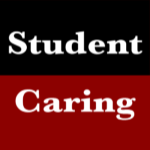
Image Source: https://www.pexels.com/photo/man-cutting-white-cable-beside-boy-in-grey-hoodie-1687401/
While many students stand to gain a lot from a traditional college education, it isn’t always the best choice for everyone. It’s important for educators to encourage students to understand their personal needs and interests and, in some cases, seek out alternative educational paths.
Fortunately for those students considering an alternative path after high school, today’s educational landscape is as diverse as ever. Trade and vocational schools, work colleges, apprenticeships, and internships are just some of the educational pathways available in lieu of traditional college.
Understanding Different Types of Intelligence
Many educational professionals believe that the traditional idea that all students, regardless of ability, should go to college directly after high school is an outdated notion. Schools and educational professionals alike need to be more accommodating to students, as there may be multiple types of intelligence, which translates into different types of learning processes.
In fact, it’s important for students to understand their strengths and find an educational journey that is tailored to their personal needs and intelligence type. Researchers suggest that there are nine distinct types of intelligence that run the gamut, from linguistic and intrapersonal intelligence to logical-mathematical and bodily-kinesthetic.
Further, everyone possesses some level of each of the nine intelligence types, as well as strengths and weaknesses in different areas. By understanding one’s individualized intelligence, students can play to their strengths when considering their higher education options.
Alternatives to Traditional College
Some students choose alternatives to college for reasons related to intelligence, while many others feel they can’t afford traditional college tuition. Whatever the underlying reason, it’s important that students understand the numerous options they have that can help them move toward a career.
This is where vocational and trade schools come into play. Vocational schools provide hands-on training in a particular field, such as nursing, dentistry, and cosmetology. Vocational programs focus on training and real-world skills rather than academic achievement.
Vocational school is considered a solid option for those looking for a long and prosperous career throughout adulthood. Rather than spending time on extracurricular or core credits, students start learning useful skills right away, which often translates into a lucrative career in a much faster time span than if they had attended traditional college. What’s more, vocational and trade schools often cost less overall.
Work Colleges and Apprenticeships
As many internships are unpaid, they’re not the best choice for students looking to stay free from major debt yet gain work skills. An apprenticeship, therefore, may be a better option. While the term “apprenticeship” may seem old-fashioned, apprenticeships can be found in a variety of modern industries, from tattooing to auto mechanics and carpentry.
Apprenticeships are similar to vocational schools, in that hands-on training is at their core. Those working as an apprentice will ultimately gain real-world skills in tandem with gaining a license to practice their chosen specialty.
Another alternative to traditional education is to enroll in a work college, which is a unique hybrid of academic learning and paid job opportunities. There are eight liberal arts work colleges in the U.S., as defined by the Work Colleges Consortium. Work college students graduate with both a degree and real-world work experience, and the majority of students also graduate with minimal student loan debt.
The High Cost of Education
As previously mentioned, the high cost of traditional college is prohibitive to many prospective students. National student loan debt is at an all-time high: According to Forbes, the collective student debt owed in 2018 was $1.5 trillion, with about 44 million total borrowers in the U.S.
For many prospective college students, the idea of going into serious debt in order to fund an education isn’t an attractive option. While there are numerous refinancing and consolidation options available, those who default on their student loans may face serious consequences.
The first step in the default process is known as student loan delinquency, and it occurs as soon as an individual misses their first payment. If a borrower is more than 90 days delinquent, the delinquency will be reported to credit bureaus, thus reducing one’s credit score over the long-term. The next step in the process is default itself, which means a student will no longer be eligible for additional loans and their wages may be garnished.
Final Thoughts
The traditional high school to college path isn’t for everyone. Fortunately for individuals eschewing four-year college, there are numerous higher learning options that can lead to a rewarding career and reduced student loan debt. Apprenticeships, vocational schools, and work colleges are designed to give students tangible skills, and they may even reduce the amount of student debt owed after graduation.
It’s important for educators to encourage students to forge their own path and identify the types of learning that work for them. Education is an individualized process, so college shouldn’t be a one-size-fits all endeavor.

0 Comments